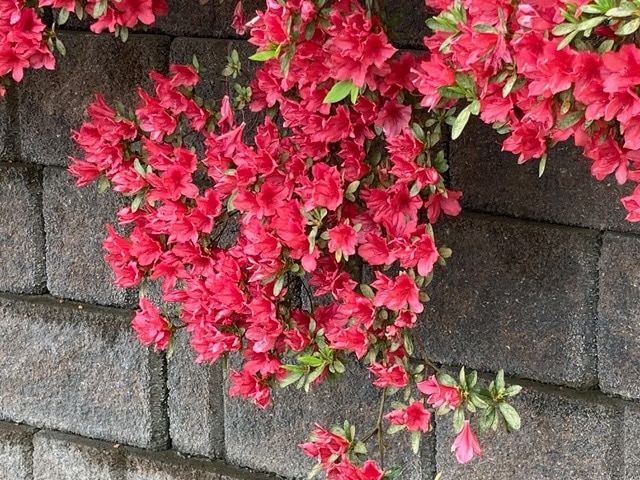
See all posts by this author
Springtime azaleas are something almost everyone looks forward to. Bright, colorful and beautiful azaleas can thrive in the Charlotte area and give a vibrant look to any landscape. But azaleas in full sun inherently get lace bugs. These insects feed on the undersides of azalea leaves, causing damage that can reduce the plant’s overall health and aesthetic appeal. Adult lace bugs are about 1/8 to 1/4 inch long with transparent and lace-like wings, giving them their name. Their body is usually flattened and rectangular in shape. Nymphs are smaller, wingless, and have a spiny appearance.

Photo courtesy of Forest and Kim Starr, Starr Environmental, Bugwood.org
In wintertime their eggs will live on the undersides of leaves. In spring, eggs hatch into nymphs, which pass through several stages before becoming adults.
Treatment and prevention of these parasites is part of an Arborscapes Plant Healthcare subscription, helping your azaleas to be as breathtaking as possible each spring. For DIY’ers however, there are several steps to managing lace bugs:
1. Cultural Control
- Plant Placement: Plant azaleas in shaded locations, as lace bugs tend to be more problematic on plants in direct sunlight.
- Plant Resistance: Some azalea varieties are more resistant to lace bugs. Considering resistant varieties when planting can minimize future problems.
2. Physical Control
- Water Spraying: A strong stream of water can dislodge the bugs from the undersides of leaves. This method can be done periodically.
- Hand Picking: If you notice the bugs early and the infestation isn’t too severe, you can pick them off manually using gloves or tweezers.
3. Biological Control
- Beneficial insects like ladybugs, lacewing larvae, and certain parasitic wasps prey on lace bugs. You can encourage these beneficial insects by planting a diverse range of plants and avoiding the use of broad-spectrum insecticides.
4. Insecticidal Soap and Horticultural Oils
- These are less toxic than many insecticides and can be effective against lace bugs. Make sure to thoroughly spray the undersides of leaves, as that’s where the bugs are usually found. Repeated applications may be necessary.
5. Systemic Insecticides
- These are taken up by the plant and can provide protection against pests for an extended period. Products containing imidacloprid or dinotefuran can be effective against lace bugs when applied as a soil drench.
6. Contact Insecticides
- These kill bugs on contact and can be effective for controlling lace bugs. Pyrethroids like bifenthrin, cyfluthrin, or permethrin can be used, but it’s essential to apply them correctly and ensure you’re spraying the undersides of leaves.
7. Regular Inspection
- Checking your azaleas regularly, especially during peak lace bug activity in the spring and summer, allows you to detect and address problems early on.
8. Maintain Plant Health
- Ensure your azaleas are well-watered and fertilized appropriately. A healthy plant is often better equipped to withstand and recover from pest damage.
Always follow label directions when using any insecticides and consider the potential impact on non-target organisms. A combined approach using multiple tactics usually provides the best results.
For those who don’t have the time to invest in these steps, call Arborscapes for a complete Plant Healthcare subscription to protect your living landscape. Your azaleas (and other plants) will thank you!
See all posts by this author
